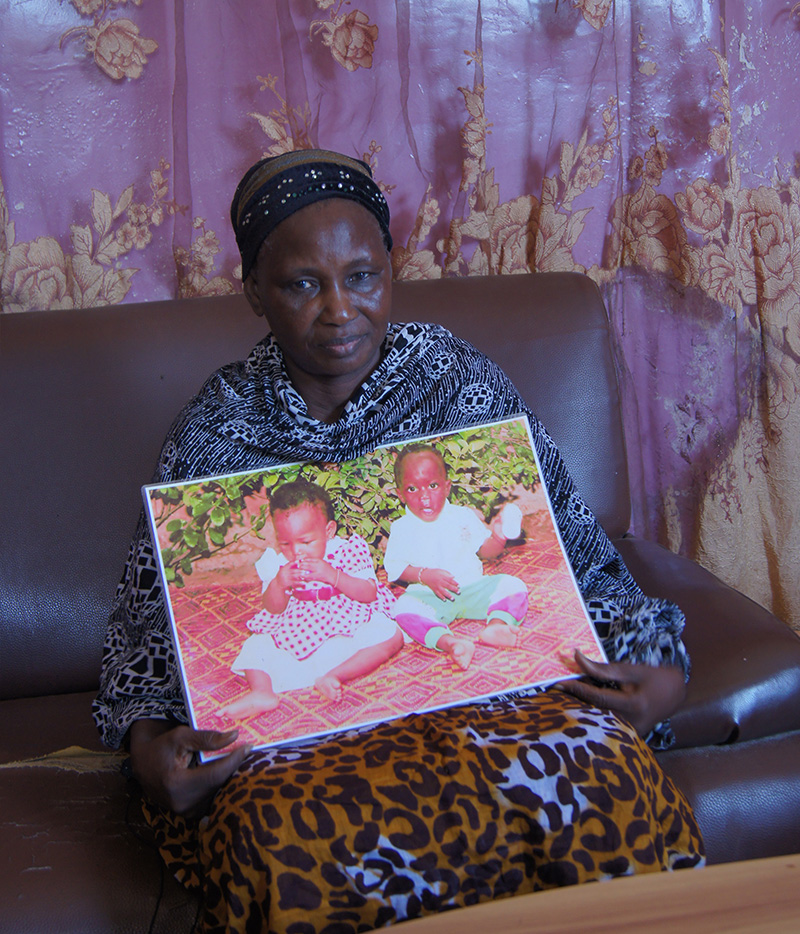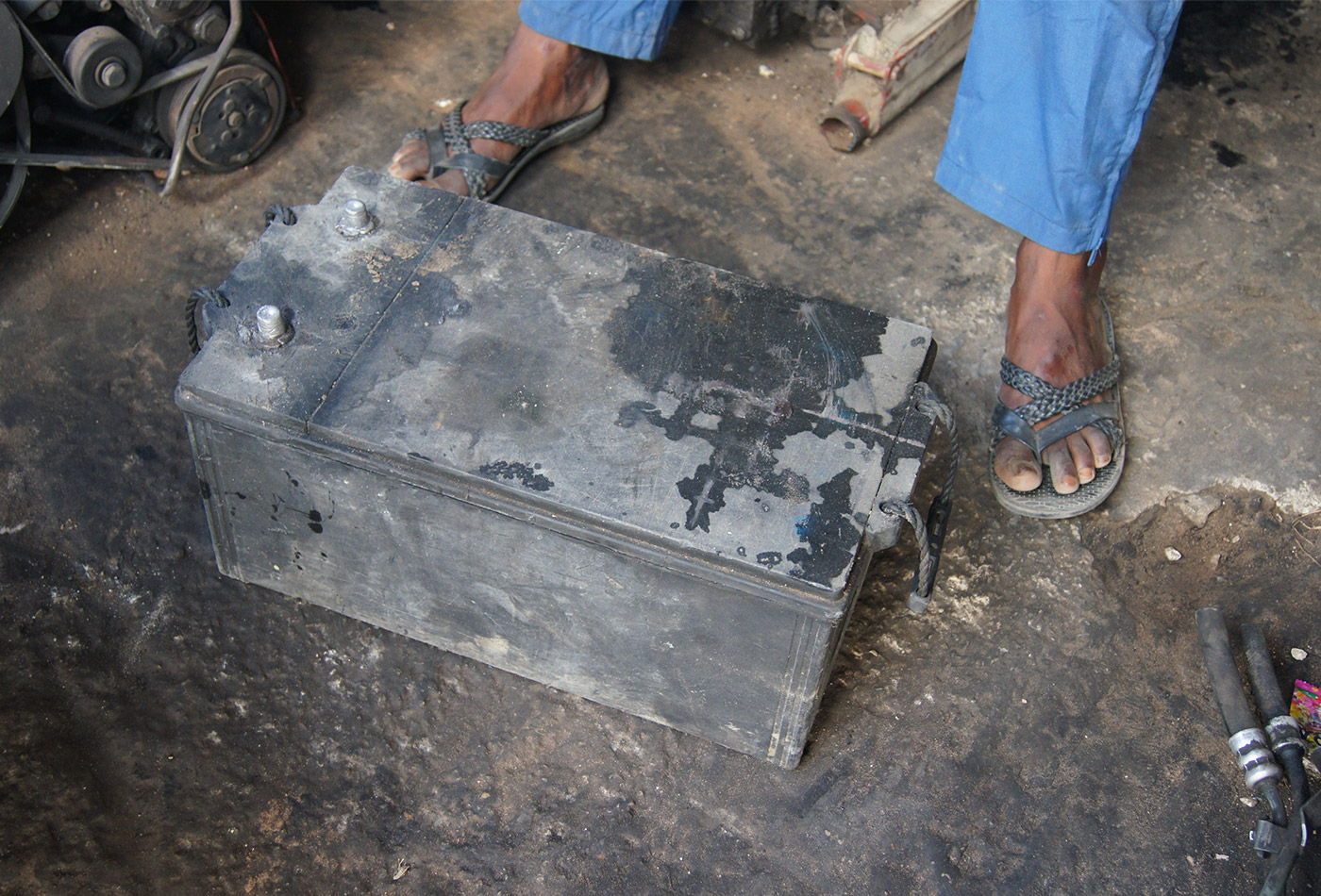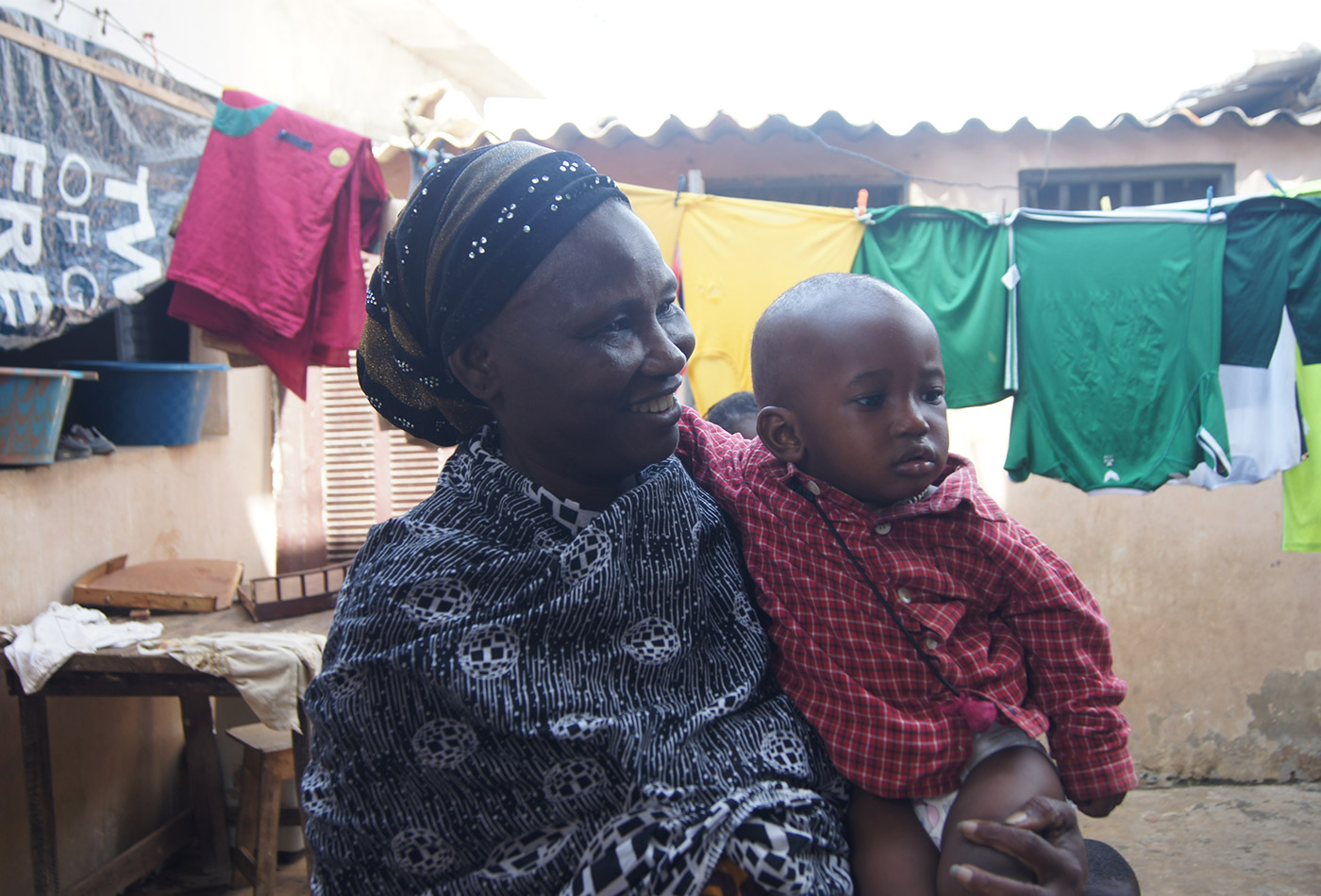
senegal
The silent killer: the struggle to stop lead poisoning
The just released report, Pollution and Health: A progress Update, found that 900,000 people worldwide died from lead poisoning in 2019. This is a 5% increase from 2015, and still the death toll is likely to be underestimated. The insidious nature of lead poisoning means the scale of the problem is only just emerging.
In Senegal, where around 50% of people live below the poverty line, the informal recycling of lead acid car batteries for scrap lead is a major contributor to lead pollution. This can be a lucrative income source for families, who earn a living by breaking up the batteries in their backyards, often unaware they are poisoning their children, themselves and the environment. The most devastating effects of lead poisoning are seen in children. But this is a silent killer, and it takes its toll gradually, often going unnoticed for years.
“It’s very possible children are getting sick from lead poisoning but they are not being picked up,” says Professor Mamadou Fall, director of the Poison Control Centre, part of the Senegalese Ministry of Health and Social Action. “It’s quite rare that paediatricians who see a child with the symptoms, especially if they’re mild, will actually think of lead contamination. It’s very possible that these kids get sick, they’re treated for other things and the symptoms go away, without anyone ever getting to the bottom of the cause.”
“If the child survives the immediate effects, there’s an intermediary phase… that’s when we start seeing the nervous system starting to be affected.” “Lead accumulates in the blood, but it also accumulates in the bones. Treatment can eliminate the lead from the blood, but the lead that has accumulated in the bones can resurface and infect the blood again. That’s why treatment has to be repeated and repeated. It takes time, it can even take years.” — Professor Mamadou Fall
More than 800 million children across the globe are estimated to have blood lead levels above 5 micrograms per decilitre, the trigger level for intervention designated by the World Health Organization, although exposure to any lead can be harmful. Lead poisoning irreversibly damages children’s developing brains, nervous systems, heart, lungs and kidneys, yet in the early stages its symptoms tend to be mild. One of the issues with detecting it is that the initial symptoms – abdominal pain, vomiting and diarrhoea – often get mistaken for malaria.
“If the child survives the immediate effects, there’s an intermediary phase… that’s when we start seeing the nervous system starting to be affected,” explains Professor Fall. “The biggest issue is the loss of intellectual capacity, which means loss of capacity to succeed in school, which has ripple effects for the rest of their lives.”
A national tragedy
Senegal already carries the scars of lead poisoning. In 2008, the issue hit the headlines when 18 children died suddenly in the small coastal community of Ngagne Diaw, Thiaroye-Sur-Mer, just outside Dakar. As the tragedy unfolded, at least 14 more children died, and many more developed life-changing learning disabilities.
The cause of the outbreak was traced to the informal recycling of lead acid car batteries. The whole of Senegal was shaken by the disaster. The local cottage industry was broken up, a clean-up operation mounted, and families began to piece their shattered lives back together.
In November 2021, the Poison Control Centre, Pure Earth and the Global Alliance of Health and Pollution (GAHP) visited Ngagne Diaw to test for lead. The soil is now less than 0.04% lead. In 2008, Pure Earth found levels that were 30x that deemed harmful for a child’s development. Things may have gotten better in Ngagne Diaw, but lead poisoning is likely to be happening elsewhere, its effects simply slipping under the radar.
 |
|---|
| In November 2021, the Poison Control Centre of Cheikh Anta Diop University, Pure Earth, and GAHP visited Ngagne Diaw to test for lead. The soil is now less than 0.04% lead. © Sarah Berg for Pure Earth/GAHP |
Lethal livelihoods
“It is still a problem,” says Mamadou Lamine Diamé, Project Manager at the Ministry of Environment and Sustainable Development in Senegal. “In Dakar there are many informal sites where people are still engaging in recycling in a clandestine way, which is very difficult for the government to control. “To a certain extent, people are aware of the risks they’re taking, but of course they are taking them because it is their livelihood.”
Seynabou Mbengue Ndiaye, who recycled lead acid batteries in Ngagne Diaw for 20 years, knows only too well the devastation lead poisoning can bring. Five of her children died during the disaster. “It was always the same scenario,” she recalls. “They had seizures, then we would take them to the hospital… they were prescribed medication, it calmed down for a while. The child would start back playing and when the seizures happened again he would die. They all died like that.”
“It is still a problem. In Dakar there are many informal sites where people are still engaging in recycling in a clandestine way, which is very difficult for the government to control.” “To a certain extent, people are aware of the risks they’re taking, but of course they are taking them because it is their livelihood.” – Mamadou Lamine Diamé
“We met one lady who told us, even though she lost three children, she is still in this business,” says Khadidiatou Djigo, GAHP’s coordinator in Senegal. “As it is an income source and they don’t have another activity…they will keep on working secretly…”
A complex issue
In many ways, Senegal is unusual because the Ngagne Diaw disaster placed this hidden issue firmly in the public consciousness. But what has unfolded since then painfully illustrates how complex an issue lead poisoning is to tackle, despite the clear threat it poses to human health and the environment. This year, with support from GAHP, Professor Fall and his team at the Poison Control Centre will run a training of trainers to build the capacity of doctors, nurses and community health workers in areas of Senegal deemed high-risk for lead pollution to spot lead poisoning symptoms. For children exposed to lead, this could be lifesaving. But it is also essential to stop the informal recycling that leads to such exposure.
One way to do this is to ensure the batteries are safely recycled. In the wake of the Ngagne Diaw disaster, a lead acid battery recycling plant was built in Sébikotane, 45 kilometres east of Dakar. Although the smelter was built to national environmental and health standards, to this day the Sébikotane community remains terrified of lead exposure.
Zaïnoul Abédine Diagne, a civil servant living in Sébikotane, says an “overwhelming, suffocating” smell came from the smelter when it was first built, which fuelled community fears. This led Zaïnoul and others in Sébikotane to mount a campaign to relocate the plant, which has now been running for more than a decade. “My community is scared that what happened in Dakar is going to happen here, that children will die,” he says. “The terrible smell has gone now but we don’t know if lead is poisoning our organs without us knowing it.”
“The terrible smell has gone now but we don't know if lead is poisoning our organs without us knowing it.” – Zaïnoul Abédine Diagne
Tackling the source
Some lead acid batteries can now be recharged, meaning they are less likely to end up in informal recyclers’ hands. In September 2021, the Senegalese government began an 18-month pilot to build three collection centres with recharging technology in Dakar, Saint-Louis and Kaolak, all highly industrialised areas.
Currently, garages can only recoup half the cost of a battery if they recycle it at a smelter, and even then there are problems because a recycling plant will not collect and transport the batteries themselves and will not accept all batteries. But batteries sent to the new collection centres can be fully repowered (if rechargeable) then returned to the garage to use as new.
 |
|---|
| A car battery at a mechanic shop in Ngagne Diaw in 2021. © Sarah Berg for Pure Earth/GAHP |
It is hoped that this, and new regulations for garages on storing used batteries and monitoring their collection, will greatly reduce informal recycling.
However, despite these changes, Mamadou Lamine Diamé at the Ministry of Environment says some informal recycling is likely to persist: “What’s really important is to provide alternative livelihoods for people. It is this that will determine whether we can really eradicate this clandestine activity or not.”
The need for collaboration
Professor Fall believes that only a multisectoral response can truly end informal recycling in Senegal and bring the country closer to freeing itself from the scourge of lead poisoning. “It’s very important that there is a coordinated programme that allows for very specific monitoring and work with the health workers on the ground…But we must also have coordination with the authorities at the Ministry of Environment. To deal with this, there has to be a far more comprehensive programme that involves everybody.”
The wheels for this cross-sector coordination have been set in motion by Senegal’s Health and Pollution Action Plan, a program of GAHP, which brings together government ministries, academics, the private sector and civil society to form a working group which chooses a country’s top environmental issues to focus on and how to tackle them. Unsurprisingly, pollution from heavy metals, including lead, was made a top priority.
 |
|---|
| Seynabou Mbengue Ndiaye with her grandchild in 2021. © Sarah Berg for Pure Earth/GAHP |
“The political will to tackle the issue is there, but there needs to be a lot more awareness among political leaders and we need the means to tackle the issue. Exposure, not only to lead but to contaminates like pesticides, is the poor relative of the health system, it’s quite neglected,” says Professor Fall. He adds: “There has been some progress but we have a long way to go. Just yesterday I changed the battery of my car – I left it with the garage – and I cannot be confident what will happen to it.”
For the next generation of Senegalese children, action cannot happen fast enough.